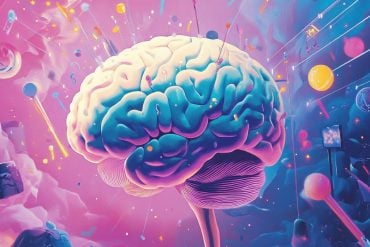Summary: What we see may not be a direct reflection of the world, but a mental representation of the world that is infused by our emotional experiences, researchers report.
Source: Association for Psychological Science.
Our emotional state in a given moment may influence what we see, according to findings published in Psychological Science. In two experiments, researchers found that participants saw a neutral face as smiling more when it was paired with an unseen positive image.
The research shows that humans are active perceivers, say psychological scientist Erika Siegel of the University of California, San Francisco and her coauthors.
“We do not passively detect information in the world and then react to it – we construct perceptions of the world as the architects of our own experience. Our affective feelings are a critical determinant of the experience we create,” the researchers explain. “That is, we do not come to know the world through only our external senses – we see the world differently when we feel pleasant or unpleasant.”
In previous studies, Siegel and colleagues found that influencing people’s emotional states outside of conscious awareness shifted their first impressions of neutral faces, making faces seem more or less likeable, trustworthy, and reliable. In this research, they wanted to see if changing people’s emotional states outside awareness might actually change how they see the neutral faces.
Using a technique called continuous flash suppression, the researchers were able to present stimuli to participants without them knowing it. In one experiment, 43 participants had a series of flashing images, which alternated between a pixelated image and a neutral face, presented to their dominant eye. At the same time, a low-contrast image of a smiling, scowling, or neutral face was presented to their nondominant eye – typically, this image will be suppressed by the stimulus presented to the dominant eye and participants will not consciously experience it.
At the end of each trial, a set of five faces appeared and participants picked the one that best matched the face they saw during the trial.
The face that was presented to participants’ dominant eye was always neutral. But they tended to select faces that were smiling more as the best match if the image that was presented outside of their awareness showed a person who was smiling as opposed to neutral or scowling
In a second experiment, the researchers included an objective measure of awareness, asking participants to guess the orientation of the suppressed face. Those who correctly guessed the orientation at better than chance levels were not included in subsequent analyses. Again, the results indicated that unseen positive faces changed participants’ perception of the visible neutral face.
Given that studies often show negative stimuli as having greater influence on behavior and decision making, the robust effect of positive faces in this research is intriguing and an interesting area for future exploration, the researchers note.

Siegel and colleagues add that their findings could have broad, real-world implications that extend from everyday social interactions to situations with more severe consequences, such as when judges or jury members have to evaluate whether a defendant is remorseful.
Ultimately, these experiments provide further evidence that what we see is not a direct reflection of the world but a mental representation of the world that is infused by our emotional experiences.
Co-authors on the research include Jolie B. Wormwood (Northeastern University), Karen S. Quigley (Northeastern University and Edith Nourse Rogers Memorial Veterans Hospital), and Lisa Feldman Barrett (Northeastern University, Massachusetts General Hospital, and Harvard Medical School).
Funding: This research was supported by the U.S. Army Research Institute for the Behavioral and Social Sciences (Grant W5J9CQ-12-C-0049 to L. F. Barrett and Grant W911N-16-1-0191 to K. S. Quigley and J. B. Wormwood) and a National Institute of Mental Health T32 grant (MH019391) to E. H. Siegel. The views, opinions, and findings contained in this article are those of the authors and shall not be construed as an official Department of the Army position, policy, or decision, unless so designated by other documents.
Source: Anna Mikulak – Association for Psychological Science
Publisher: Organized by NeuroscienceNews.com.
Image Source: NeuroscienceNews.com image is in the public domain.
Original Research: Abstract for “Seeing What You Feel: Affect Drives Visual Perception of Structurally Neutral Faces” by Erika H. Siegel, Jolie B. Wormwood, Karen S. Quigley, and Lisa Feldman Barrett in Psychological Science. Published April 2018,
doi:10.1177/0956797617741718
[cbtabs][cbtab title=”MLA”]Association for Psychological Science “The Emotions We Feel May Shape What We See.” NeuroscienceNews. NeuroscienceNews, 11 April 2018.
<https://neurosciencenews.com/emotion-perception-8757/>.[/cbtab][cbtab title=”APA”]Association for Psychological Science (2018, April 11). The Emotions We Feel May Shape What We See. NeuroscienceNews. Retrieved April 11, 2018 from https://neurosciencenews.com/emotion-perception-8757/[/cbtab][cbtab title=”Chicago”]Association for Psychological Science “The Emotions We Feel May Shape What We See.” https://neurosciencenews.com/emotion-perception-8757/ (accessed April 11, 2018).[/cbtab][/cbtabs]
Abstract
Seeing What You Feel: Affect Drives Visual Perception of Structurally Neutral Faces
Affective realism, the phenomenon whereby affect is integrated into an individual’s experience of the world, is a normal consequence of how the brain processes sensory information from the external world in the context of sensations from the body. In the present investigation, we provided compelling empirical evidence that affective realism involves changes in visual perception (i.e., affect changes how participants see neutral stimuli). In two studies, we used an interocular suppression technique, continuous flash suppression, to present affective images outside of participants’ conscious awareness. We demonstrated that seen neutral faces are perceived as more smiling when paired with unseen affectively positive stimuli. Study 2 also demonstrated that seen neutral faces are perceived as more scowling when paired with unseen affectively negative stimuli. These findings have implications for real-world situations and challenge beliefs that affect is a distinct psychological phenomenon that can be separated from cognition and perception.






